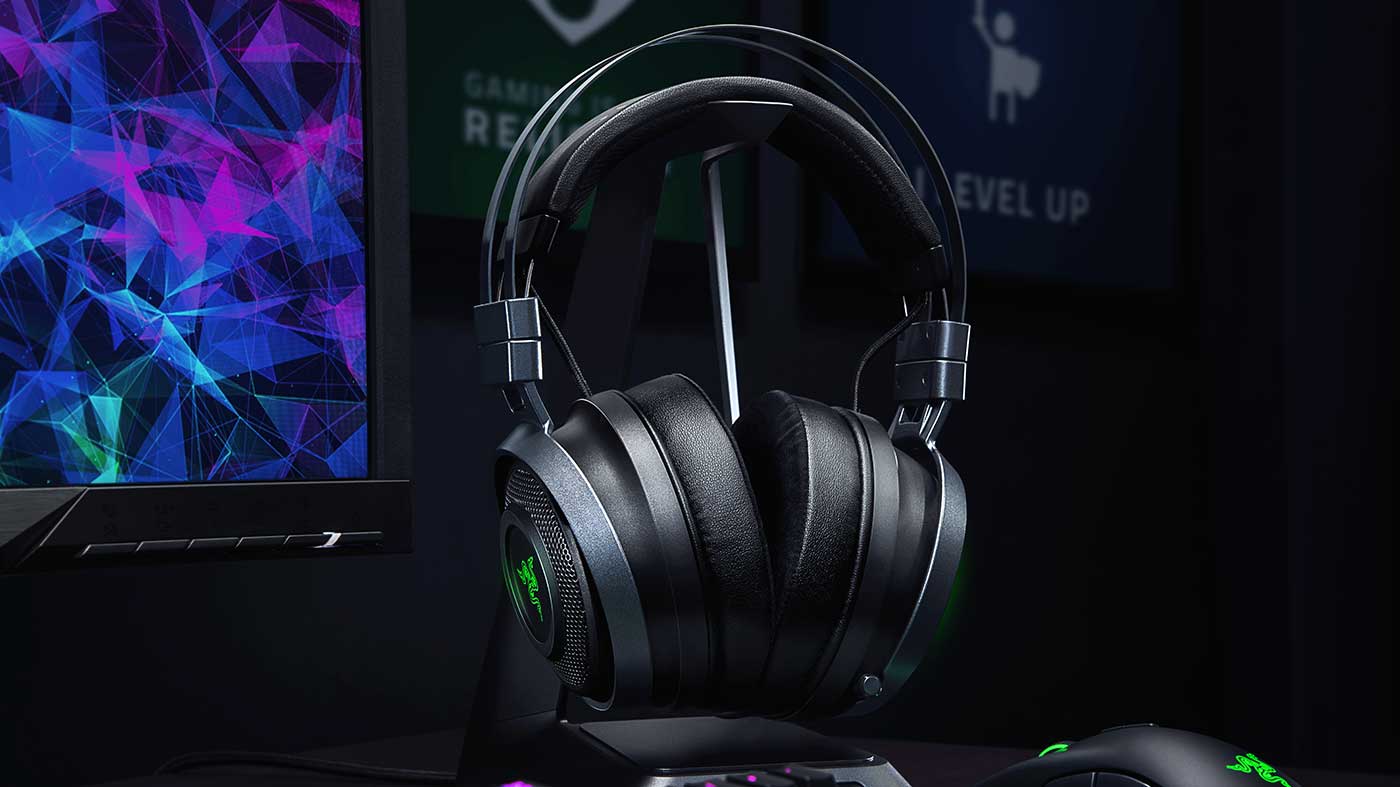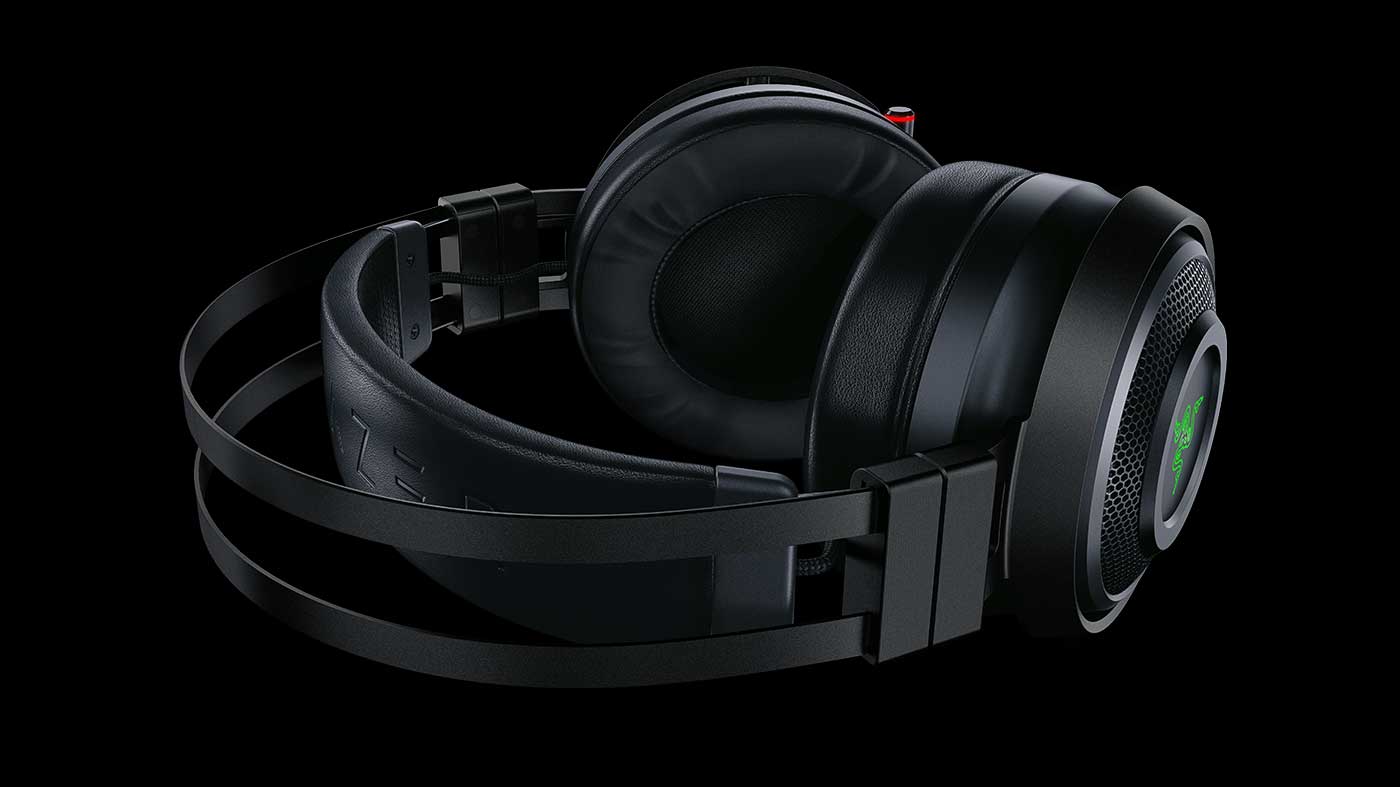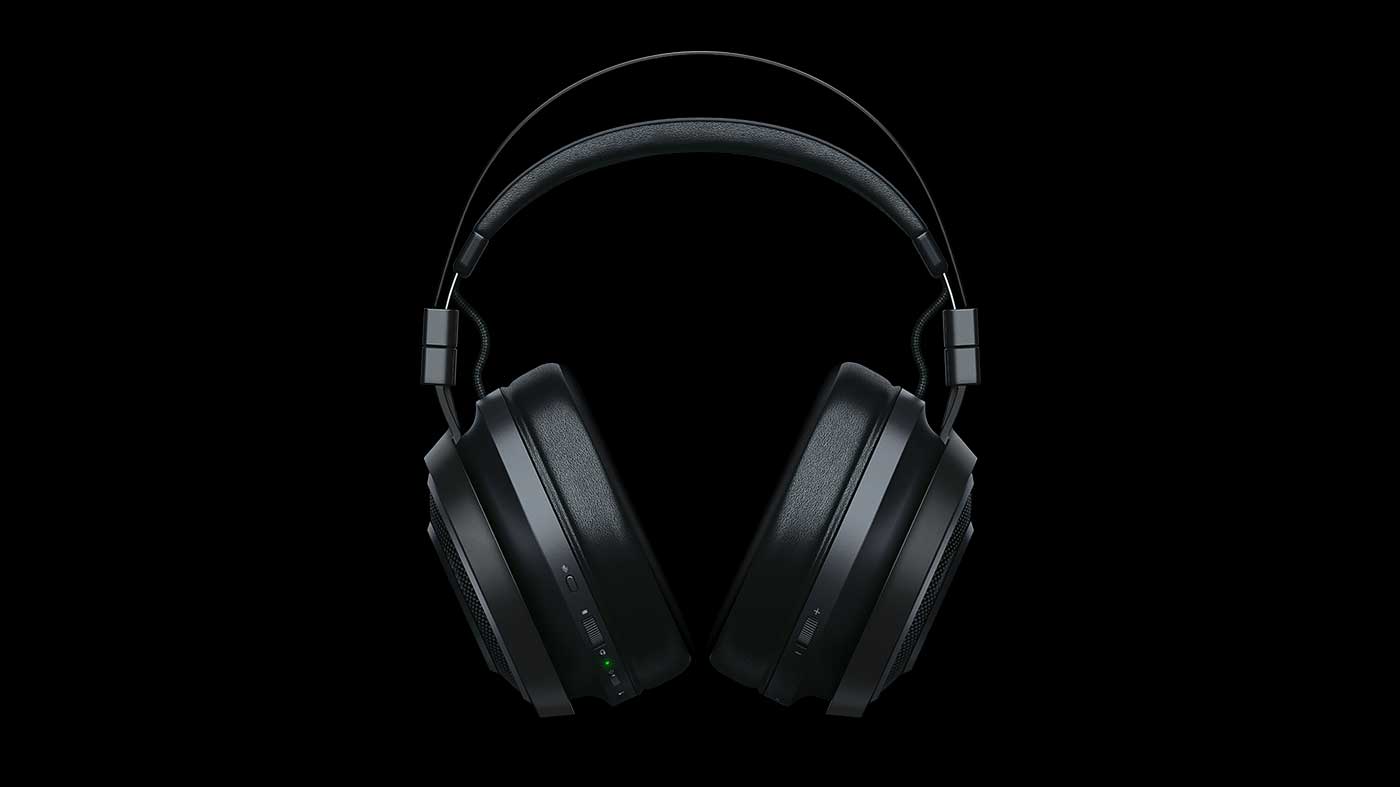The pursuit of immersion has taken us to some weird places. I wonder what archaeologists, thousands of years from now, will make of the swathe of plastic steering wheels, guitars and tennis bats we’ve used for gaming purposes. Peripherals always seem a little odd at first. I’m sure in 1997, when the Rumble Pak was introduced for the Nintendo 64, there were a few raised eyebrows.
As time has passed, however, we’ve become accustomed to force feedback in our controllers and it has become ever more precise, allowing us to feel every bullet fired and bump in the road. A feature that might have once seemed odd is now commonplace. So, when Razer came to me with a headset that rumbled, a headset that had haptic feedback built into the earcups, I tried to remain open-minded.

It’s hard to deny that the Razer’s Nari Ultimate wireless headset is unlike any other. Featuring their ‘Hypersense’ technology, the headset reacts to your game’s sounds, rumbling with every impact. Anything that makes a significant sound causes the earcup to vibrate against your head, endeavouring to push immersion further. In a sense, it works. Gunshots hit a little harder and bass feels a little punchier, but only because the headset is bringing a physicality to sound that I’ve not experienced before.
It also disguises what is rather unimpressive sound quality. It’s not terrible, and will of course likely be a noticeable improvement if you’re using a significantly cheaper headset, but at $350 you ought to be expecting the premium stuff. It lacks the depth I’d want, all the sound feeling a little muddled and washed out. It’s worth noting there’s not a great deal of noise isolation, and the headset does bleed audio rather substantially too.

The ‘Hypersense’ is a neat gimmick, but ultimately it is little more than that; a gimmick. Unfortunately, it’s inconsistent and struggles to distinguish between heavy bass, a blast or various audio cues. The sound design in games in increasingly complex and sadly the haptic feedback struggles to handle it. At times it feels somewhat natural but at other times it feels uncomfortable. Never quite as bad as the dentist drilling into your teeth, but not far off.
Fortunately, the Razer Synapse software – which has had a significant facelift in the current 3.0 beta – offers plenty of control over the headset. Using it on PC and making full use of the companion software is where the headset shines. You can take full control over the 3D audio positioning and dial back the haptic feedback, or more importantly, turn it off altogether. I was very impressed with the suite of mixing and EQ controls and the wireless functionality, that allows chat and game audio to be separated into two channels via the one USB output.

Whilst it is compatible with consoles, sadly the features don’t extend that far. Audio and game chat are merged into the one channel, making the headsets inbuilt balance control knob obsolete. Of course, you can manage that using the console’s own software, but on my PlayStation, there was only so far I could bring down party chat, which always felt a little loud. My preference is always a headset that makes use of a console’s optical audio output and USB output to separate the channels.
Otherwise, I can’t overly fault the headset. It’s well-built and feels solid. It’s got an enormous form factor (I would never make use of the included AUX cord and take this out and about) but is lightweight and comfortable for long play sessions, in part to its loose-fitting design. I like that the boom mic recoils within the headset and there’s a little cavity to store the USB adapter. The battery life and range is real decent too, it’s just a pity they opted for a micro-USB charging input, the worst of all the USB inputs to be honest. The grey and black combination of plastic and metal is very much my aesthetic and the customisable glowing Razer logo on each earcup reps the brand well without being obnoxious.



